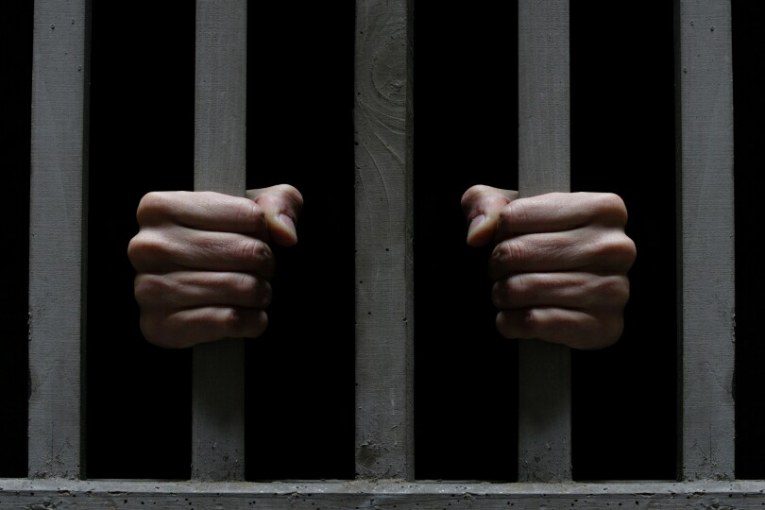

Last week the Vanguard published a study from the Sentencing Project that cited racially-disproportionate juvenile incarceration rates. The temptation is to believe without scrutiny that those rates are due to the disproportionate commission of crimes.
While there may be some truth to that, the crime commission rate alone does not explain all of the discrepancy and in some cases is flat out false.
This week, writer and provocateur Shaun King spoke at UC Davis and part of his talk focused on The New Jim Crow by Michelle Alexander. This is the idea that the legal system and prisons have become an extension of the old race-based Jim Crow laws.
As Mr. King put it, “I used to say that the system is broken.” He came to the conclusion that he was wrong, “The system is not broken – what you learn from the New Jim Crow is that that was where the system was broken, it was corrected and it reverted to the mean. This is on purpose.”
He said, “A broken system suggests it was well-designed and well-intentioned and now it’s kind of messed up a little bit. No, actually this is a system that is operating exactly as it was designed and built to function.”
Right here, he said, Richard Nixon and his chief policy advisor “wanted to figure out how they could basically criminalize blackness.” He said, “They wanted to figure out how they could make it be illegal to be black without actually saying it – because you can’t say it.”
So they said, “[L]et’s find laws that currently exist that we will only enforce against African Americans. Second, let’s create new laws – not hundreds but thousands of new laws have been created since then – that we will only enforce against African Americans and other people of color.”
Basically Jonathan Rothwell of the Brookings Institute found: “Arrest data show a striking trend: arrests of blacks have fallen for violent and property crimes, but soared for drug related crimes. As of 2011, drug crimes comprised 14 percent of all arrests and a miscellaneous category that includes ‘drug paraphernalia’ possession comprised an additional 31 percent of all arrests. Just 6 percent and 14 percent of arrests were for violent and property crimes, respectively.”
But it is worse than that. “Blacks are far more likely to be arrested for selling or possessing drugs than whites, even though whites use drugs at the same rate. And whites are actually more likely to sell drugs,” the Post reports.
Mr. Rothwell writes; “Whites were about 45 percent more likely than blacks to sell drugs in 1980, according to an analysis of the National Longitudinal Survey of Youth by economist Robert Fairlie. This was consistent with a 1989 survey of youth in Boston. My own analysis 
of data from the 2012 National Survey on Drug Use and Health shows that 6.6 percent of white adolescents and young adults (aged 12 to 25) sold drugs, compared to just 5.0 percent of blacks (a 32 percent difference).”
As it turns out that is about enforcement. There is a big difference in the drug markets in the black and white communities. The Post article notes, “In poor black neighborhoods, drugs tend to be sold outdoors, in the open. In white neighborhoods, by contrast, drug transactions typically happen indoors, often between friends and acquaintances. If you sell drugs outside, you’re much more likely to get caught.”
The problem is that this has a much bigger impact than you think.
This week during a webinar, Marc Mauer of the Sentencing Project made the point that people of color are over-identified as committing crimes, and then disproportionately prosecuted for those crimes.
And what we see here is exactly that. Police practices and discretion result in higher arrest rates for minorities. Once they get in the system, they are more likely to be prosecuted, more likely to be convicted, and more likely to do prison time – and when they do prison time, it is for a longer term.
As an article with the American Sociological Association notes: “Varying explanations for the persistence of minority disadvantage in the U.S. criminal justice system are drawn from research findings in several areas: (1) minority juveniles are more likely to be disadvantaged in the juvenile justice system, thus creating a cumulative record of disadvantage over the life course; (2) police discretion results in higher arrest rates (as well as harsher treatment at arrest) for minorities; (3) the War on Drugs, and other ‘get tough’ legislation enacted since the 1980s at the state and federal levels disadvantage African Americans; (4) persistent, unwarranted sentencing disparities as well as differentials in rates of incarceration indicate racial biases; and (5) directly or indirectly, the death penalty targets blacks.”
But this all starts with uneven drug policies.
Shaun King cited a Washington Post black-white drug study that took place from 1980 to 2010 and what it showed is that, over those 30 years, African Americans used drugs at about the same rate as white people.
What was surprising was that “white Americans sold drugs at a higher rate – I don’t mean more white people because there are more white people in the county – I mean a higher percentage of white people sold drugs more often than African Americans except that African Americans were prosecuted 800 percent more thereby creating the stereotype in American as a drug dealer as a young black man.
“This isn’t an accident, it’s on purpose,” he said.
Data such as this gives lie to the notion that underlying the disproportionate incarceration rate are simply differences in the rate of committing crimes. The reality is that, even where whites are committing more crimes than blacks, the arrest and incarceration rate is disproportionate.
—David M. Greenwald reporting
Come see the Vanguard Event – “In Search of Gideon” – which highlights some of the key work performed by the Yolo County Public Defender’s Office…

a little discretion goes a long ways.